Explore a variety of beautiful flowers that start with the letter H. From the common hibiscus to the exotic heliconia, learn about their unique features and growing tips.
Flowers bring color, fragrance and beauty to our gardens and homes. There are many flowers that start with the letter H, each with its unique charm and characteristics. In this article, we’ll explore 20 of these flowers, their features and some tips on how to grow them. Whether you’re an avid gardener or simply a flower enthusiast, you’ll find something to inspire you.
1. Hibiscus

Here’s a chart with information about Hibiscus:
| Category | Details |
|---|---|
| Botanical Name | Hibiscus spp. |
| Common Name | Hibiscus, Rose Mallow, Tropical Hibiscus |
| Plant Zone | 5-11 (varies by species; tropical varieties are 9-11) |
| Sun Exposure | Full sun |
| Soil Type | Well-drained, fertile soil |
| Watering | Regular watering; prefers consistently moist soil |
| Growth Habit | Upright shrub or small tree |
| Height/Spread | 3-10 feet tall; 3-6 feet wide |
| Special Features | Large, showy flowers in a wide range of colors (red, pink, white, yellow, orange); blooms from late spring to fall; attracts hummingbirds and butterflies; can be grown in containers; some species are hardy, others are tropical |
Hibiscus is a popular tropical flower known for its large, vibrant blooms. They are often used in teas and traditional medicines.
- Features: Bright, showy flowers in various colors like red, pink, yellow, and white.
- Growing Tips: Prefers full sun and well-drained soil. Needs regular watering.
Learn more about hibiscus from the University of Florida.
2. Hydrangea

Here’s a chart with information about Hydrangea:
| Category | Details |
|---|---|
| Botanical Name | Hydrangea spp. |
| Common Name | Hydrangea |
| Plant Zone | 3-9 (varies by species) |
| Sun Exposure | Full sun to partial shade (depends on variety) |
| Soil Type | Well-drained, rich soil |
| Watering | Regular watering; prefers consistently moist soil |
| Growth Habit | Upright to spreading shrub |
| Height/Spread | 3-12 feet tall; 3-12 feet wide (varies by species) |
| Special Features | Large, globe-like flower clusters in various colors (blue, pink, white, purple, green); color of some species influenced by soil pH; blooms from late spring to fall; attracts pollinators; excellent for cut flowers and dried arrangements |
Hydrangea is a beloved garden shrub with clusters of flowers that can change color based on soil pH. They are perfect for creating lush garden borders.
- Features: Large, round flower clusters in blue, pink, white, or purple.
- Growing Tips: Prefers partial shade and moist, well-drained soil.
Read more about hydrangeas from the University of Georgia.
3. Hyacinth
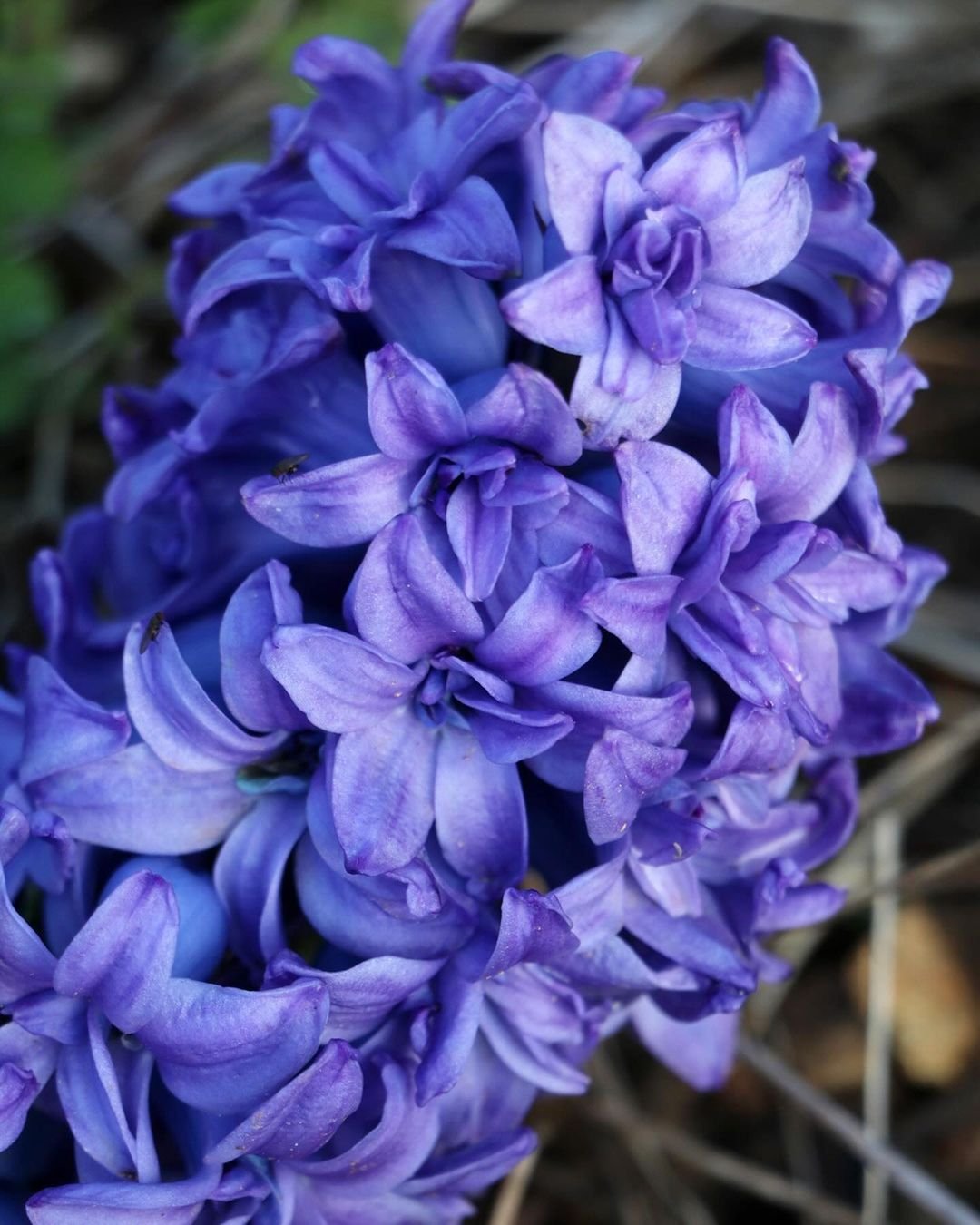
Here’s a chart with information about Hyacinth:
| Category | Details |
|---|---|
| Botanical Name | Hyacinthus orientalis |
| Common Name | Hyacinth |
| Plant Zone | 3-9 |
| Sun Exposure | Full sun to partial shade |
| Soil Type | Well-drained, fertile soil |
| Watering | Moderate watering; allow soil to dry out between waterings |
| Growth Habit | Upright, bulbous perennial |
| Height/Spread | 6-12 inches tall; 4-6 inches wide |
| Special Features | Dense spikes of highly fragrant flowers in various colors (blue, pink, white, yellow, purple); blooms in early to mid-spring; popular for garden beds, borders, and containers; excellent for forcing indoors; attracts pollinators |
Hyacinth is a fragrant spring bulb that adds a burst of color to gardens. They are often grown indoors as well for their delightful scent.
- Features: Dense spikes of fragrant flowers in various colors.
- Growing Tips: Plant in well-drained soil with full sun to partial shade.
Discover more about hyacinths from Iowa State University.
4. Hollyhock

Here’s a chart with information about Hollyhock:
| Category | Details |
|---|---|
| Botanical Name | Alcea rosea |
| Common Name | Hollyhock |
| Plant Zone | 3-8 |
| Sun Exposure | Full sun |
| Soil Type | Well-drained, fertile soil |
| Watering | Moderate watering; prefers moist but well-drained soil |
| Growth Habit | Tall, upright biennial or short-lived perennial |
| Height/Spread | 5-8 feet tall; 1-2 feet wide |
| Special Features | Large, showy, single or double flowers in various colors (red, pink, yellow, white, purple, black); blooms in summer; attracts bees, butterflies, and hummingbirds; ideal for cottage gardens and back borders; can be prone to rust disease |
Hollyhock is a tall, old-fashioned flower that adds height and drama to gardens. They attract pollinators like bees and butterflies.
- Features: Tall spikes of large, colorful flowers.
- Growing Tips: Prefers full sun and well-drained soil. Needs staking for support.
Learn about hollyhocks from the University of Minnesota.
5. Hellebore
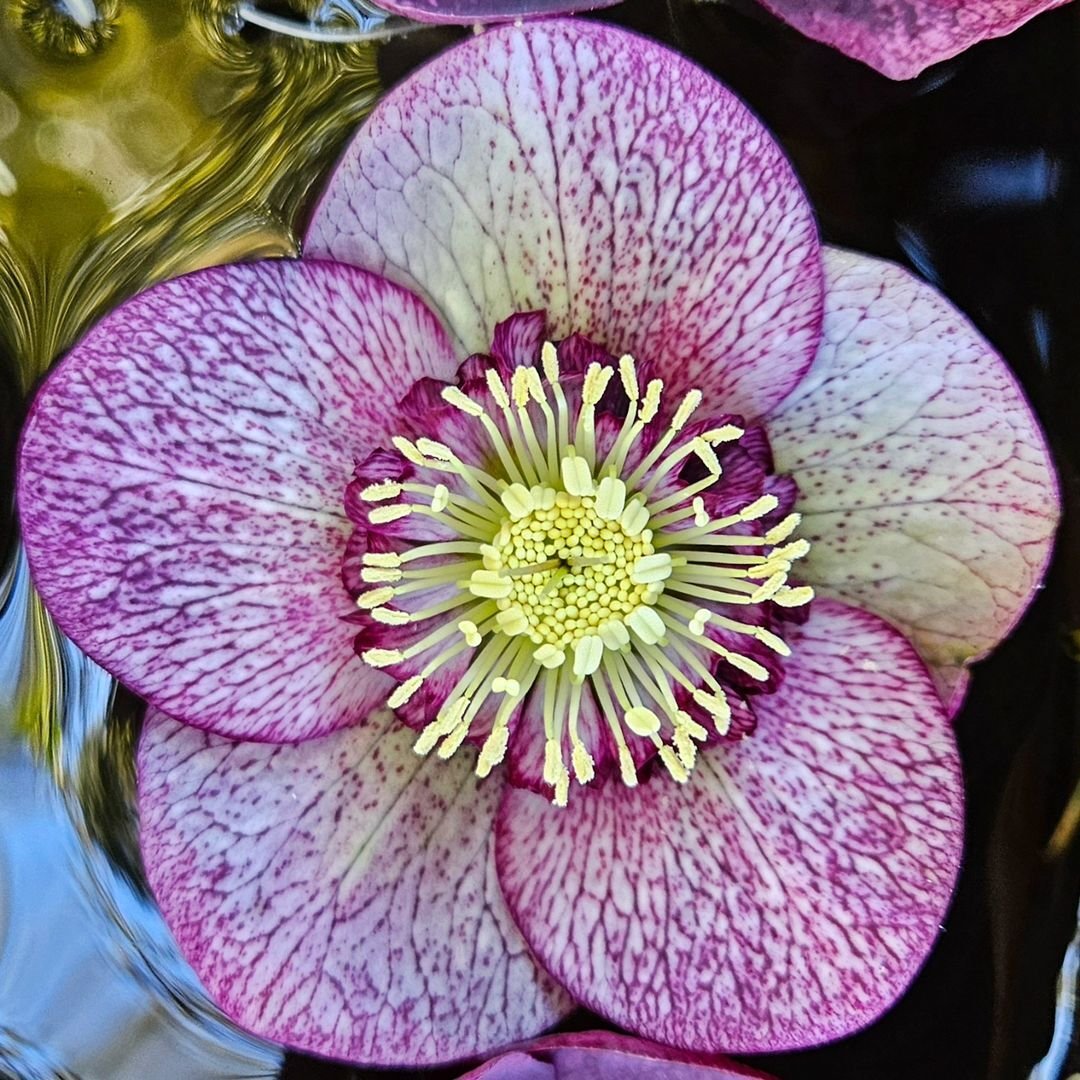
Here’s a chart with information about Hellebore:
| Category | Details |
|---|---|
| Botanical Name | Helleborus spp. |
| Common Name | Hellebore, Lenten Rose, Christmas Rose |
| Plant Zone | 4-9 |
| Sun Exposure | Partial shade to full shade |
| Soil Type | Well-drained, rich, humus-rich soil |
| Watering | Moderate watering; prefers moist, well-drained soil |
| Growth Habit | Clump-forming perennial |
| Height/Spread | 12-24 inches tall; 12-24 inches wide |
| Special Features | Bowl-shaped flowers in shades of white, pink, purple, green, and yellow; blooms in late winter to early spring; evergreen foliage; deer and rabbit resistant; excellent for shady garden beds and woodland gardens; long-lasting blooms that can persist for several months |
Hellebore, also known as Lenten rose, is a hardy perennial that blooms in early spring. They are known for their long-lasting blooms in the garden.
- Features: Cup-shaped flowers in shades of white, pink, and purple.
- Growing Tips: Prefers partial to full shade and well-drained soil.
6. Helenium
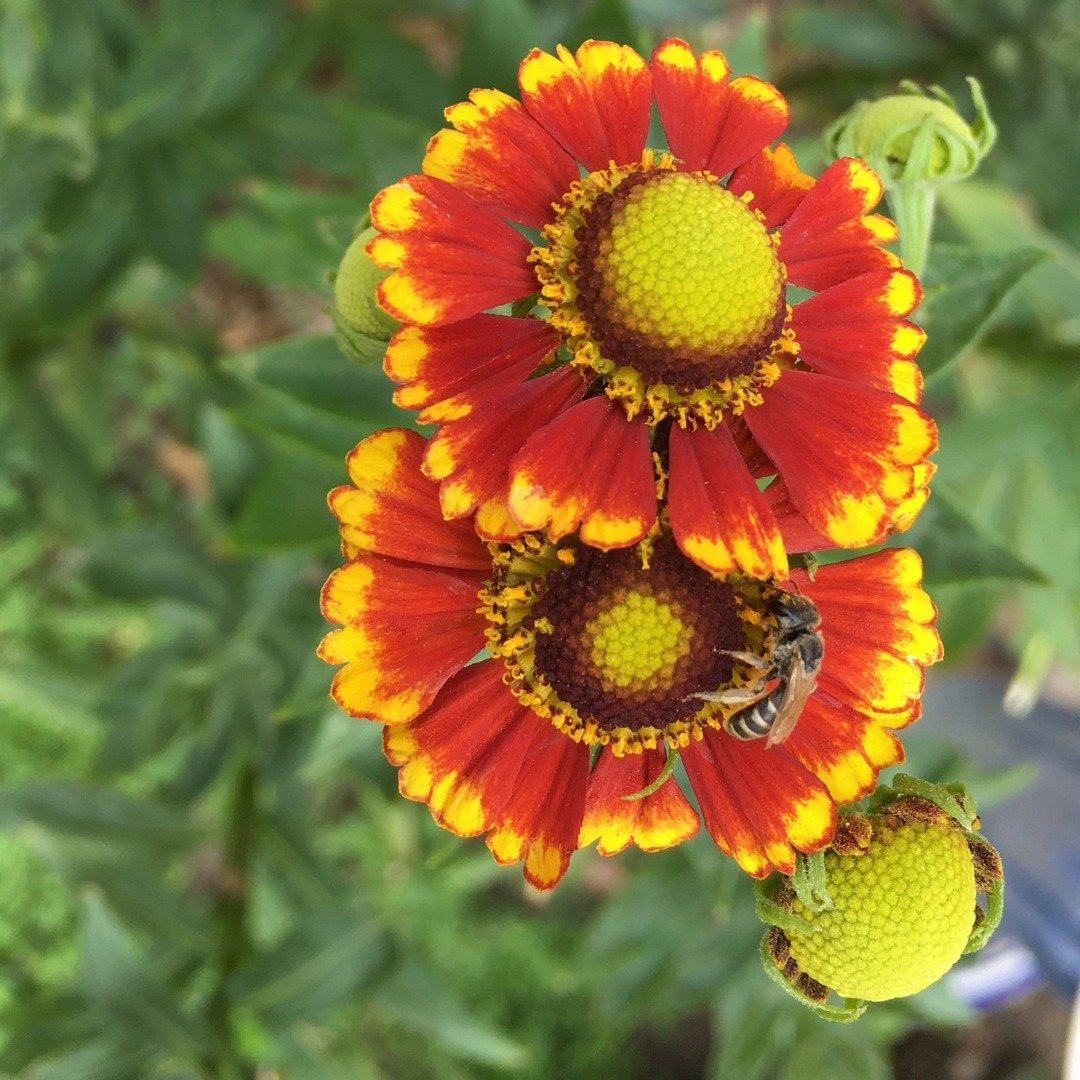
Here’s a chart with information about Helenium:
| Category | Details |
|---|---|
| Botanical Name | Helenium spp. |
| Common Name | Helenium, Sneezeweed |
| Plant Zone | 3-8 |
| Sun Exposure | Full sun |
| Soil Type | Well-drained, fertile soil |
| Watering | Regular watering; prefers consistently moist soil |
| Growth Habit | Upright, clump-forming perennial |
| Height/Spread | 3-5 feet tall; 2-3 feet wide |
| Special Features | Daisy-like flowers with prominent central cones in shades of yellow, orange, red, and bicolor; blooms from summer to fall; attracts butterflies and bees; deer resistant; excellent for borders, meadows, and cutting gardens |
Helenium is a cheerful perennial that adds late summer color to gardens. They are commonly used in perennial borders and cut flower gardens.
- Features: Daisy-like flowers in shades of yellow, orange, and red.
- Growing Tips: Prefers full sun and moist, well-drained soil.
Discover heleniums from the Royal Horticultural Society.
7. Honeysuckle

Here’s a chart with information about Honeysuckle:
| Category | Details |
|---|---|
| Botanical Name | Lonicera spp. |
| Common Name | Honeysuckle |
| Plant Zone | 4-9 (varies by species) |
| Sun Exposure | Full sun to partial shade |
| Soil Type | Well-drained, fertile soil |
| Watering | Regular watering; prefers consistently moist soil |
| Growth Habit | Climbing vine or shrub |
| Height/Spread | 10-20 feet tall (vines); 3-6 feet tall and wide (shrubs) |
| Special Features | Fragrant, tubular flowers in shades of white, yellow, pink, red, or orange; blooms from spring to summer; attracts hummingbirds, butterflies, and bees; some species produce ornamental berries; can be invasive in some regions |
Honeysuckle is a fragrant vine that attracts hummingbirds and bees. They can be used to cover fences and trellises.
- Features: Tubular flowers in various colors with a sweet fragrance.
- Growing Tips: Prefers full sun to partial shade and well-drained soil.
8. Hosta

Here’s a chart with information about Hosta:
| Category | Details |
|---|---|
| Botanical Name | Hosta spp. |
| Common Name | Hosta, Plantain Lily |
| Plant Zone | 3-9 |
| Sun Exposure | Partial to full shade |
| Soil Type | Well-drained, rich, moist soil |
| Watering | Regular watering; prefers consistently moist soil |
| Growth Habit | Clump-forming perennial |
| Height/Spread | 6-36 inches tall; 12-60 inches wide |
| Special Features | Attractive foliage in various shades of green, blue, and variegated patterns; tall spikes of lavender, white, or purple flowers in summer; shade tolerant; deer and slug prone; excellent for shade gardens, borders, and ground cover |
Hosta is a shade-loving perennial known for its attractive foliage. They are perfect for ground cover in shady garden areas.
- Features: Large, lush leaves with spikes of small, bell-shaped flowers.
- Growing Tips: Prefers partial to full shade and moist, well-drained soil.
Read more about hostas from the University of Missouri.
9. Heliconia
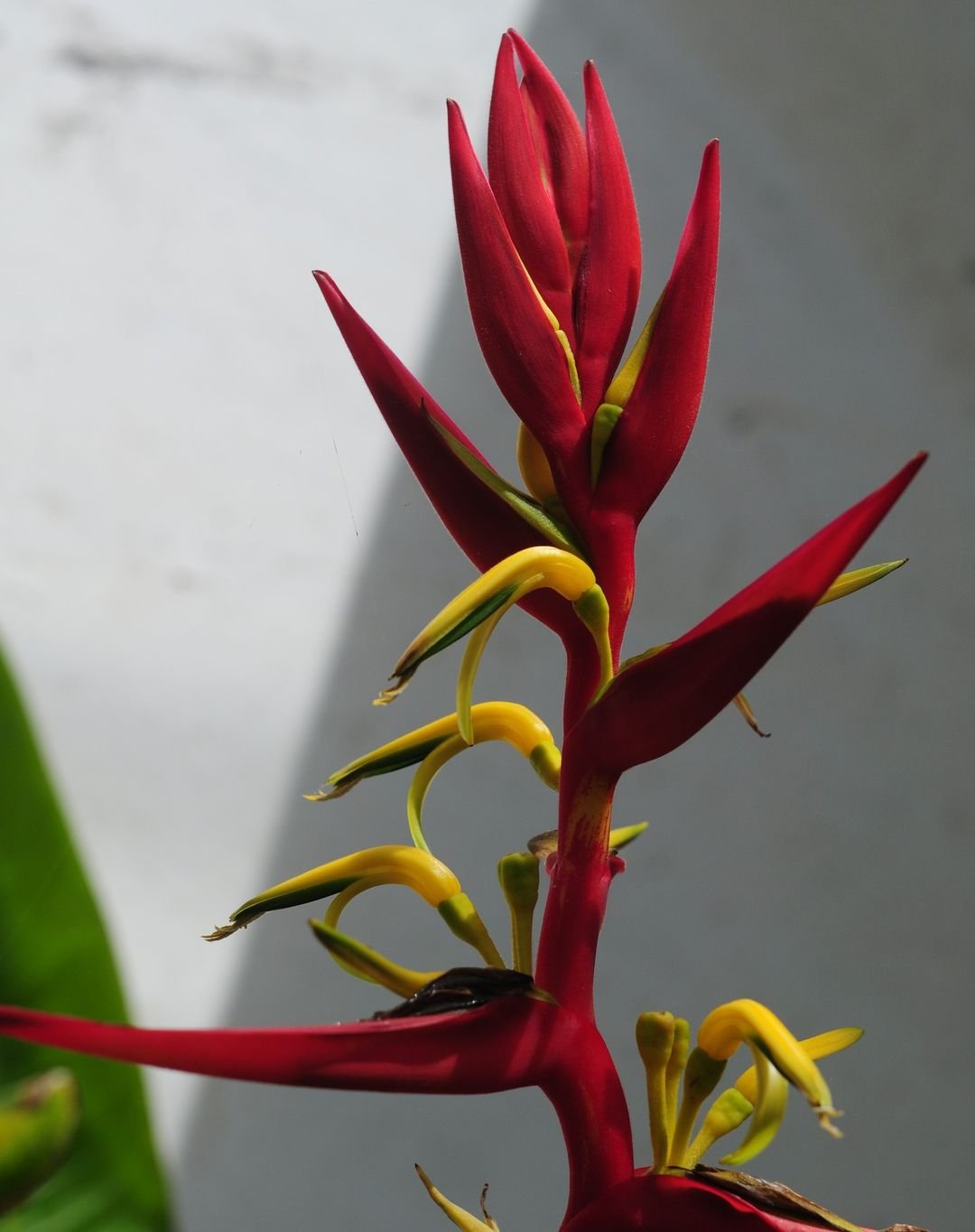
Here’s a chart with information about Heliconia:
| Category | Details |
|---|---|
| Botanical Name | Heliconia spp. |
| Common Name | Heliconia, Lobster Claw, False Bird of Paradise |
| Plant Zone | 9-11 |
| Sun Exposure | Full sun to partial shade |
| Soil Type | Well-drained, rich, organic soil |
| Watering | Regular watering; prefers consistently moist soil |
| Growth Habit | Upright, clump-forming perennial |
| Height/Spread | 3-15 feet tall; 3-6 feet wide |
| Special Features | Showy, tropical flowers with brightly colored bracts in shades of red, orange, yellow, or pink; blooms year-round in tropical climates; attracts hummingbirds; excellent for tropical gardens, container planting, and cut flowers; needs protection from frost |
Heliconia is a tropical plant known for its striking, bird-like flowers. They are often used in tropical floral arrangements.
- Features: Large, colorful bracts that resemble lobster claws.
- Growing Tips: Prefers full sun to partial shade and well-drained soil.
10. Heather

Here’s a chart with information about Heather:
| Category | Details |
|---|---|
| Botanical Name | Calluna vulgaris (common heather), Erica spp. (heaths and heathers) |
| Common Name | Heather, Scotch Heather, Ling |
| Plant Zone | 4-6 (varies by species) |
| Sun Exposure | Full sun to partial shade |
| Soil Type | Well-drained, acidic soil |
| Watering | Moderate watering; prefers well-drained soil |
| Growth Habit | Low-growing, mat-forming shrub |
| Height/Spread | 6-36 inches tall; 24-36 inches wide |
| Special Features | Small, bell-shaped flowers in shades of pink, purple, white, and red; blooms from late summer to fall; evergreen foliage that can change color in winter; attracts bees and other pollinators; excellent for ground cover, rock gardens, and borders; drought tolerant once established |
Heather is a hardy shrub that adds color to gardens year-round. They are often used in rock gardens and as ground cover.
- Features: Small, bell-shaped flowers in pink, purple, and white.
- Growing Tips: Prefers full sun and well-drained, acidic soil.
Learn about heather from the Royal Horticultural Society.
11. Heath

Here’s a chart with information about Heath:
| Category | Details |
|---|---|
| Botanical Name | Erica spp. |
| Common Name | Heath |
| Plant Zone | 4-7 |
| Sun Exposure | Full sun to partial shade |
| Soil Type | Well-drained, acidic soil |
| Watering | Moderate watering; prefers well-drained soil |
| Growth Habit | Low-growing, shrub-like perennial |
| Height/Spread | 6-18 inches tall; 12-24 inches wide |
| Special Features | Small, tubular flowers in shades of pink, purple, white, and red; blooms from late winter to early spring; evergreen foliage; attracts bees and other pollinators; excellent for ground cover, rock gardens, and borders; drought tolerant once established |
Heath is a close relative of heather, known for its evergreen foliage and small flowers. They thrive in coastal and alpine gardens.
- Features: Tiny, bell-shaped flowers in various colors.
- Growing Tips: Prefers full sun and well-drained, acidic soil.
Read more about heath from the Missouri Botanical Garden.
12. Hibbertia
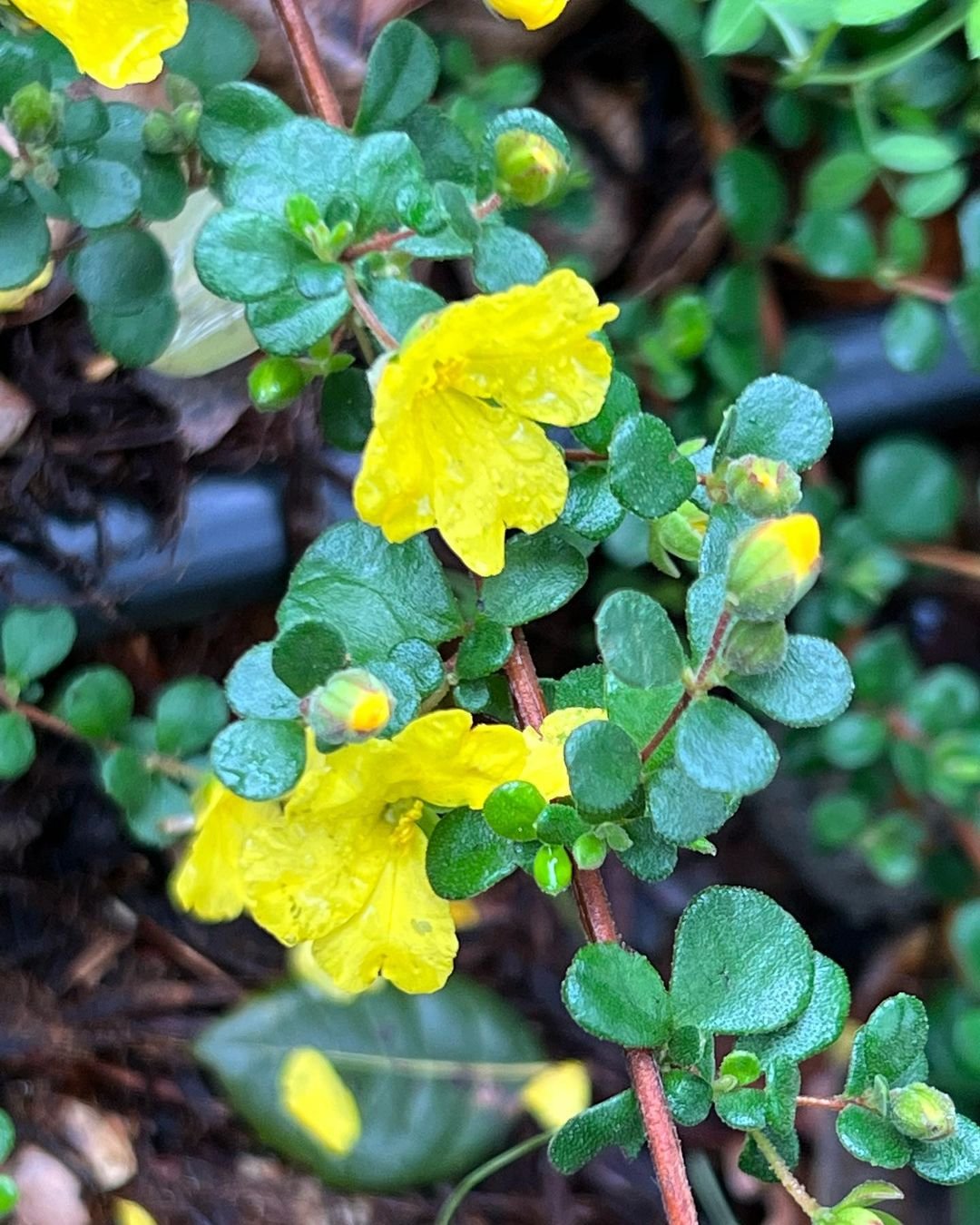
Here’s a chart with information about Hibbertia:
| Category | Details |
|---|---|
| Botanical Name | Hibbertia spp. |
| Common Name | Hibbertia, Guinea Flower |
| Plant Zone | 9-11 |
| Sun Exposure | Full sun to partial shade |
| Soil Type | Well-drained, sandy or loamy soil |
| Watering | Moderate watering; prefers well-drained soil |
| Growth Habit | Shrub or trailing ground cover |
| Height/Spread | 1-6 feet tall; 2-6 feet wide |
| Special Features | Bright yellow, cup-shaped flowers; blooms from spring to summer; evergreen foliage; attracts bees and other pollinators; good for ground cover and as a low hedge; tolerant of dry conditions once established |
Hibbertia is an Australian native plant with bright yellow flowers. They are often used in xeriscaping due to their drought tolerance.
- Features: Small, bright yellow flowers with a shrub-like growth habit.
- Growing Tips: Prefers full sun and well-drained soil.
Discover hibbertia from the Australian National Botanic Gardens.
13. Hoary Stock
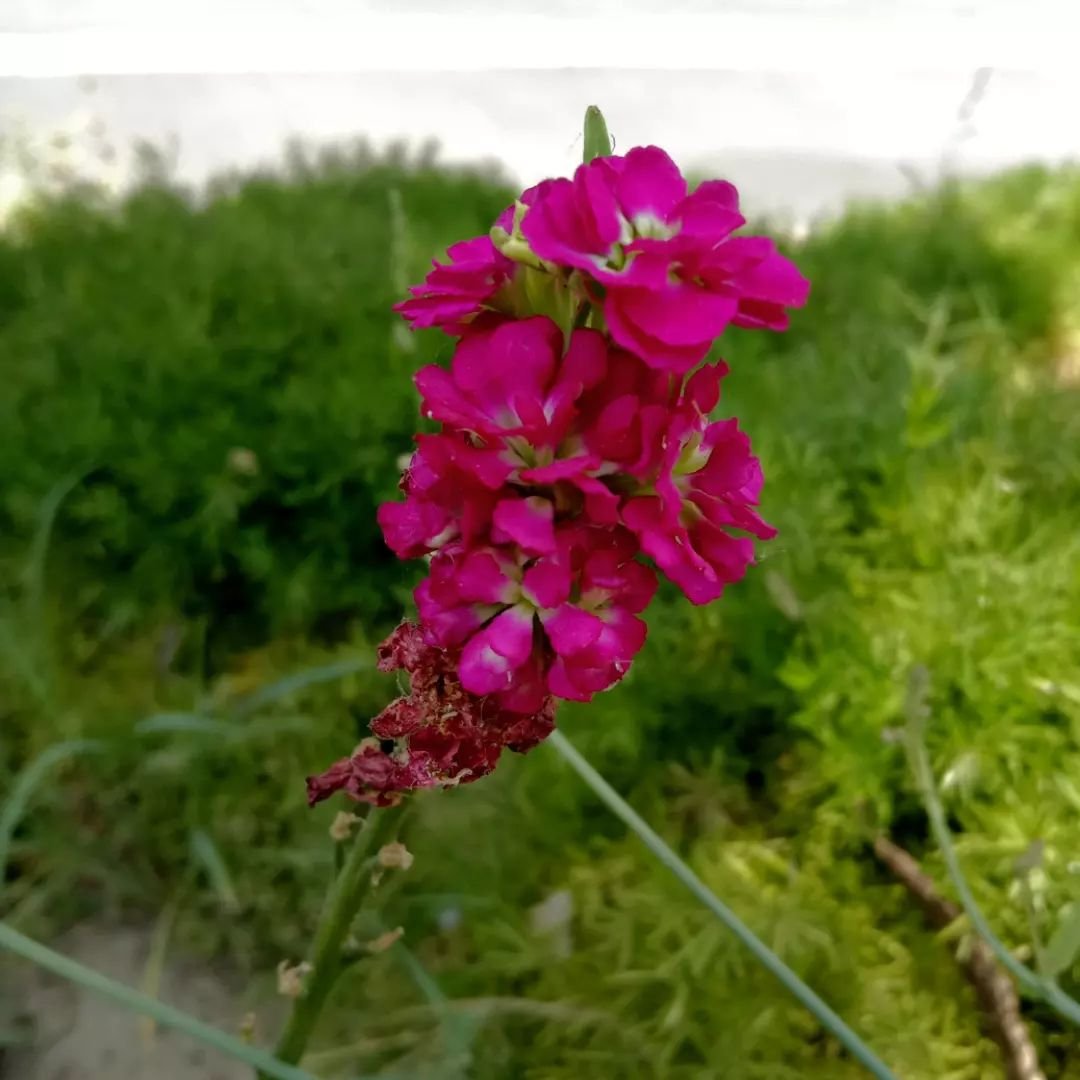
Here’s a chart with information about Hoary Stock:
| Category | Details |
|---|---|
| Botanical Name | Matthiola incana |
| Common Name | Hoary Stock, Stock Flower |
| Plant Zone | 3-7 |
| Sun Exposure | Full sun to partial shade |
| Soil Type | Well-drained, fertile soil |
| Watering | Regular watering; prefers moist but well-drained soil |
| Growth Habit | Upright, clump-forming biennial |
| Height/Spread | 12-24 inches tall; 6-12 inches wide |
| Special Features | Fragrant, densely packed flowers in shades of pink, purple, white, red, and yellow; blooms from late spring to summer; attracts pollinators; often used in garden beds and containers; can be susceptible to rust and other fungal diseases |
Hoary Stock is a fragrant biennial that adds charm to cottage gardens. They are also known for their ability to thrive in sandy soils.
- Features: Spikes of fragrant flowers in shades of white, pink, and purple.
- Growing Tips: Prefers full sun and well-drained soil.
Learn about hoary stock from the University of California.
14. Harebell
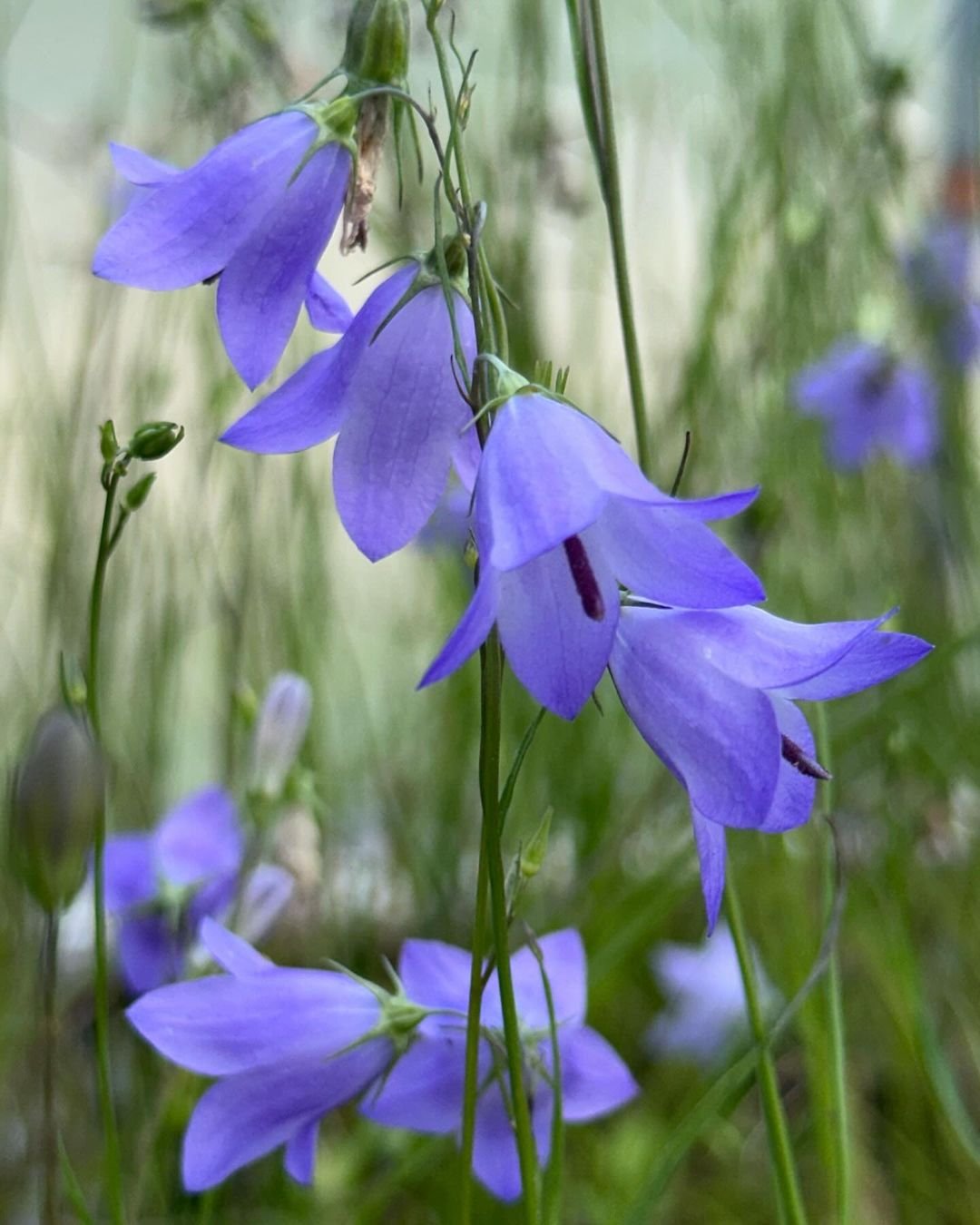
Here’s a chart with information about Harebell:
| Category | Details |
|---|---|
| Botanical Name | Campanula rotundifolia |
| Common Name | Harebell, Scottish Bluebell |
| Plant Zone | 3-7 |
| Sun Exposure | Full sun to partial shade |
| Soil Type | Well-drained, sandy or loamy soil |
| Watering | Moderate watering; prefers dry to moderately moist soil |
| Growth Habit | Clump-forming perennial |
| Height/Spread | 8-18 inches tall; 6-12 inches wide |
| Special Features | Bell-shaped, nodding flowers in shades of blue, purple, or white; blooms from summer to early fall; attracts bees and butterflies; suitable for rock gardens, meadows, and border edges; drought-tolerant once established |
Harebell is a delicate wildflower that blooms in late summer. They are often found in meadows and rocky slopes.
- Features: Small, bell-shaped blue or purple flowers.
- Growing Tips: Prefers full sun to partial shade and well-drained soil.
Read more about harebells from the University of Wisconsin.
15. Hummingbird Plant

Here’s a chart with information about Hummingbird Flower, which refers to plants known for attracting hummingbirds due to their tubular, nectar-rich flowers:
| Category | Details |
|---|---|
| Botanical Name | Various species (including Salvia, Monarda, Fuchsia, Lobelia, Heuchera) |
| Common Name | Hummingbird Flower |
| Plant Zone | 3-11 (varies by species) |
| Sun Exposure | Full sun to partial shade |
| Soil Type | Well-drained, rich soil |
| Watering | Regular watering; prefers moist but well-drained soil |
| Growth Habit | Varies: upright, spreading, or trailing |
| Height/Spread | Varies: 6 inches to 6 feet tall; 6 inches to 4 feet wide |
| Special Features | Tubular, nectar-rich flowers in shades of red, orange, pink, purple, or blue; blooms from spring to fall; highly attractive to hummingbirds; some species also attract butterflies; often used in wildlife gardens, containers, and as border plants |
Hummingbird Plant is known for its tubular flowers that attract hummingbirds. They are ideal for wildlife gardens.
- Features: Bright red or orange tubular flowers.
- Growing Tips: Prefers full sun and well-drained soil.
16. Hydrangea Vine
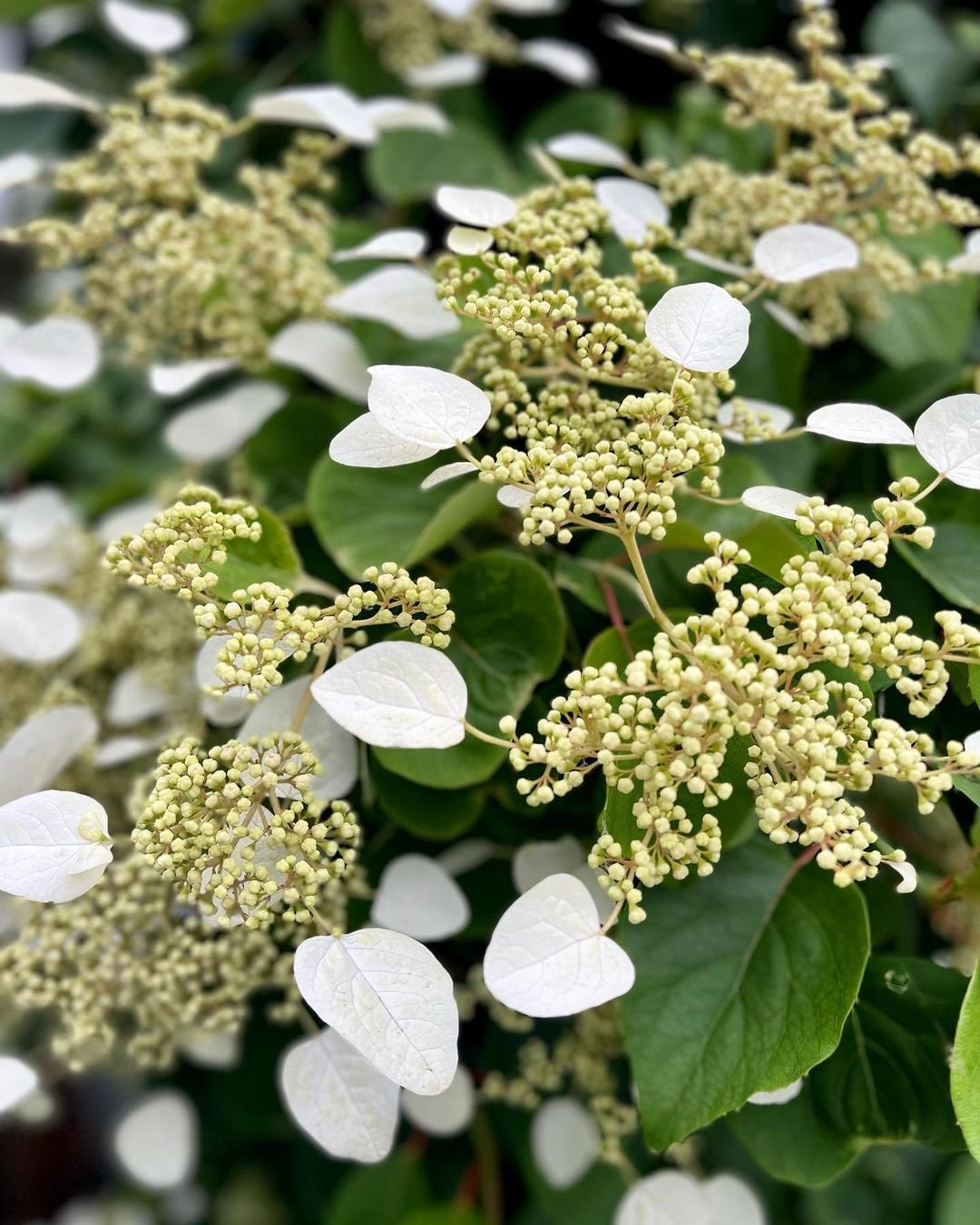
Here’s a chart with information about Hydrangea Vine:
| Category | Details |
|---|---|
| Botanical Name | Hydrangea anomala subsp. petiolaris |
| Common Name | Hydrangea Vine, Climbing Hydrangea |
| Plant Zone | 4-8 |
| Sun Exposure | Partial to full shade |
| Soil Type | Well-drained, fertile soil |
| Watering | Regular watering; prefers consistently moist soil |
| Growth Habit | Climbing vine with aerial roots |
| Height/Spread | 30-50 feet tall; 6-10 feet wide |
| Special Features | Large, lacecap or mophead flowers in shades of white, pink, or blue; blooms in summer; attractive foliage that turns shades of red and purple in fall; excellent for covering walls, trellises, and arbors; provides good shade and privacy; needs support for climbing |
Hydrangea Vine is a climbing plant with lacecap-type flowers. They can add a touch of elegance to walls and pergolas.
- Features: Clusters of white flowers with a sweet fragrance.
- Growing Tips: Prefers partial shade and moist, well-drained soil.
Learn about hydrangea vines from the University of Illinois.
17. Hypericum
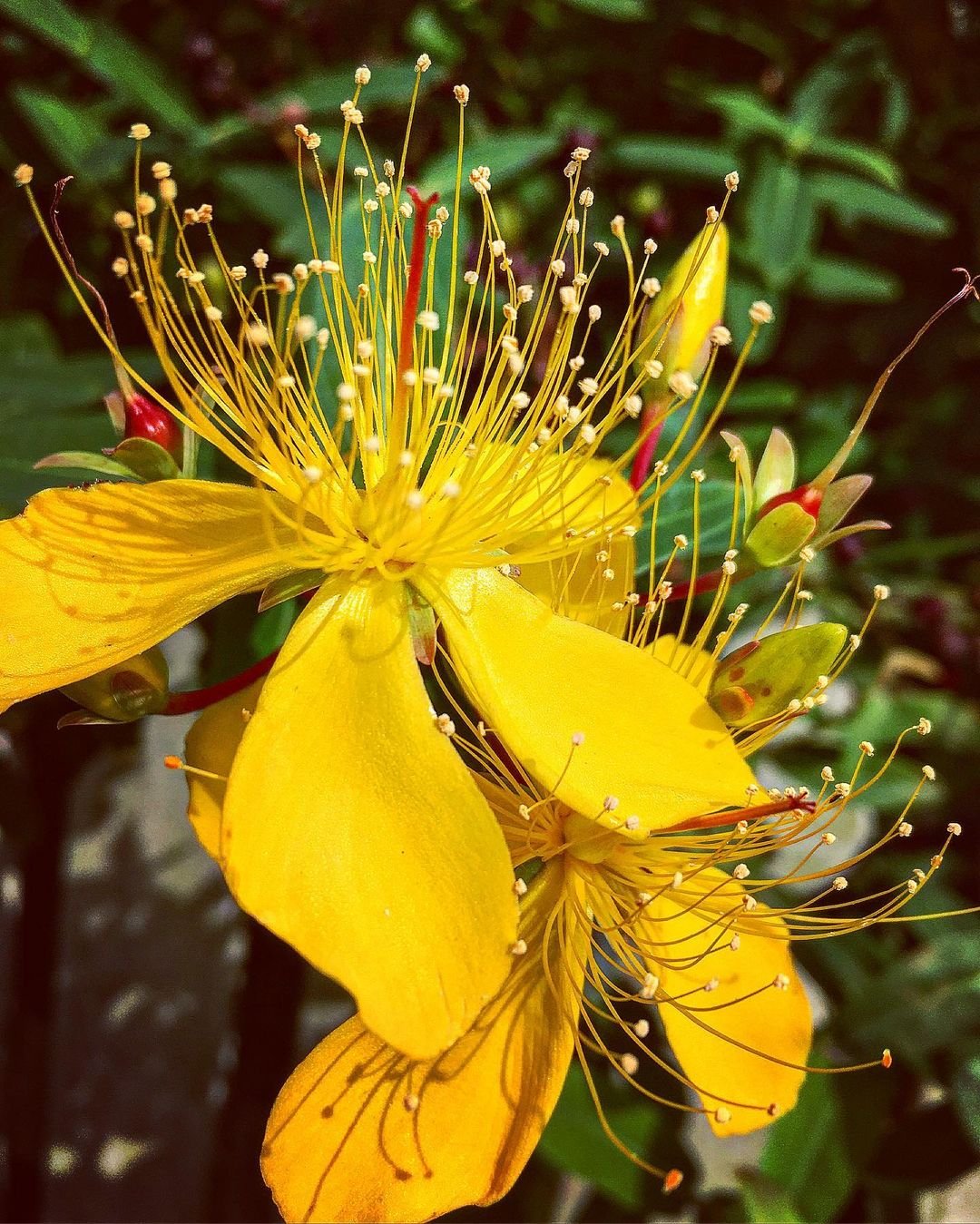
Here’s a chart with information about Hypericum:
| Category | Details |
|---|---|
| Botanical Name | Hypericum spp. |
| Common Name | St. John’s Wort, Hypericum |
| Plant Zone | 4-9 |
| Sun Exposure | Full sun to partial shade |
| Soil Type | Well-drained, sandy or loamy soil |
| Watering | Moderate watering; prefers well-drained soil |
| Growth Habit | Upright, bushy shrub or ground cover |
| Height/Spread | 1-6 feet tall; 1-4 feet wide |
| Special Features | Bright yellow, star-shaped flowers; blooms in summer; attractive foliage that turns red in fall; some species have medicinal uses; attracts butterflies and bees; can be used as ground cover or in borders; some varieties have a spreading habit, while others are more upright |
Hypericum, also known as St. John’s Wort, is a medicinal plant with bright yellow flowers. It is often used in herbal medicine for its antidepressant properties.
- Features: Bright yellow, star-shaped flowers.
- Growing Tips: Prefers full sun to partial shade and well-drained soil.
Read more about hypericum from the University of Maryland Medical Center.
18. Helipterum
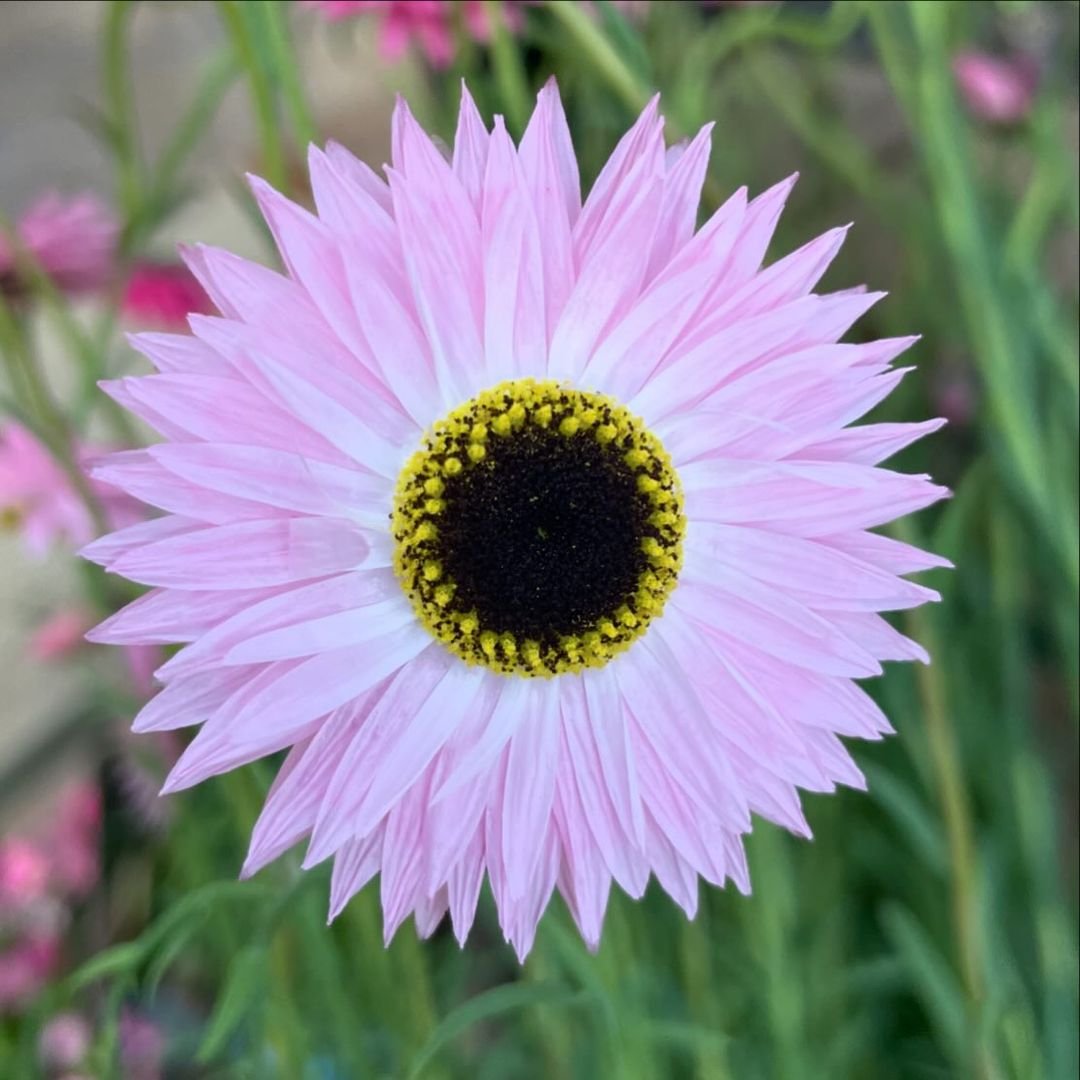
Here’s a chart with information about Helipterum:
| Category | Details |
|---|---|
| Botanical Name | Helipterum spp. |
| Common Name | Paper Daisy, Everlasting Daisy |
| Plant Zone | 9-11 |
| Sun Exposure | Full sun |
| Soil Type | Well-drained, sandy or loamy soil |
| Watering | Moderate watering; prefers well-drained soil |
| Growth Habit | Upright or spreading annual or perennial |
| Height/Spread | 12-24 inches tall; 12-18 inches wide |
| Special Features | Papery, daisy-like flowers in shades of white, yellow, pink, or red; blooms from summer to fall; excellent for dried flower arrangements; attracts bees and butterflies; often used in garden beds and borders; drought tolerant once established |
Helipterum is an Australian native known for its papery, everlasting flowers. They are popular in dried flower arrangements.
- Features: Small, daisy-like flowers in white, pink, or yellow.
- Growing Tips: Prefers full sun and well-drained soil.
Discover helipterum from the Australian National Botanic Gardens.
19. Heliotrope

Here’s a chart with information about Heliotrope:
| Category | Details |
|---|---|
| Botanical Name | Heliotropium arborescens |
| Common Name | Heliotrope |
| Plant Zone | 9-11 |
| Sun Exposure | Full sun to partial shade |
| Soil Type | Well-drained, fertile soil |
| Watering | Regular watering; prefers consistently moist soil |
| Growth Habit | Compact, bushy annual or perennial |
| Height/Spread | 12-18 inches tall; 12-18 inches wide |
| Special Features | Fragrant clusters of small flowers in shades of purple, blue, pink, or white; blooms from late spring to fall; attracts butterflies and bees; used in garden beds, containers, and as edging; may be grown as an annual in cooler climates |
Heliotrope is a fragrant annual known for its clusters of purple flowers. They are often planted near walkways to enjoy their sweet scent.
- Features: Small, fragrant flowers in shades of purple and white.
- Growing Tips: Prefers full sun to partial shade and well-drained soil.
Learn about heliotrope from the University of California.
20. Horned Poppy
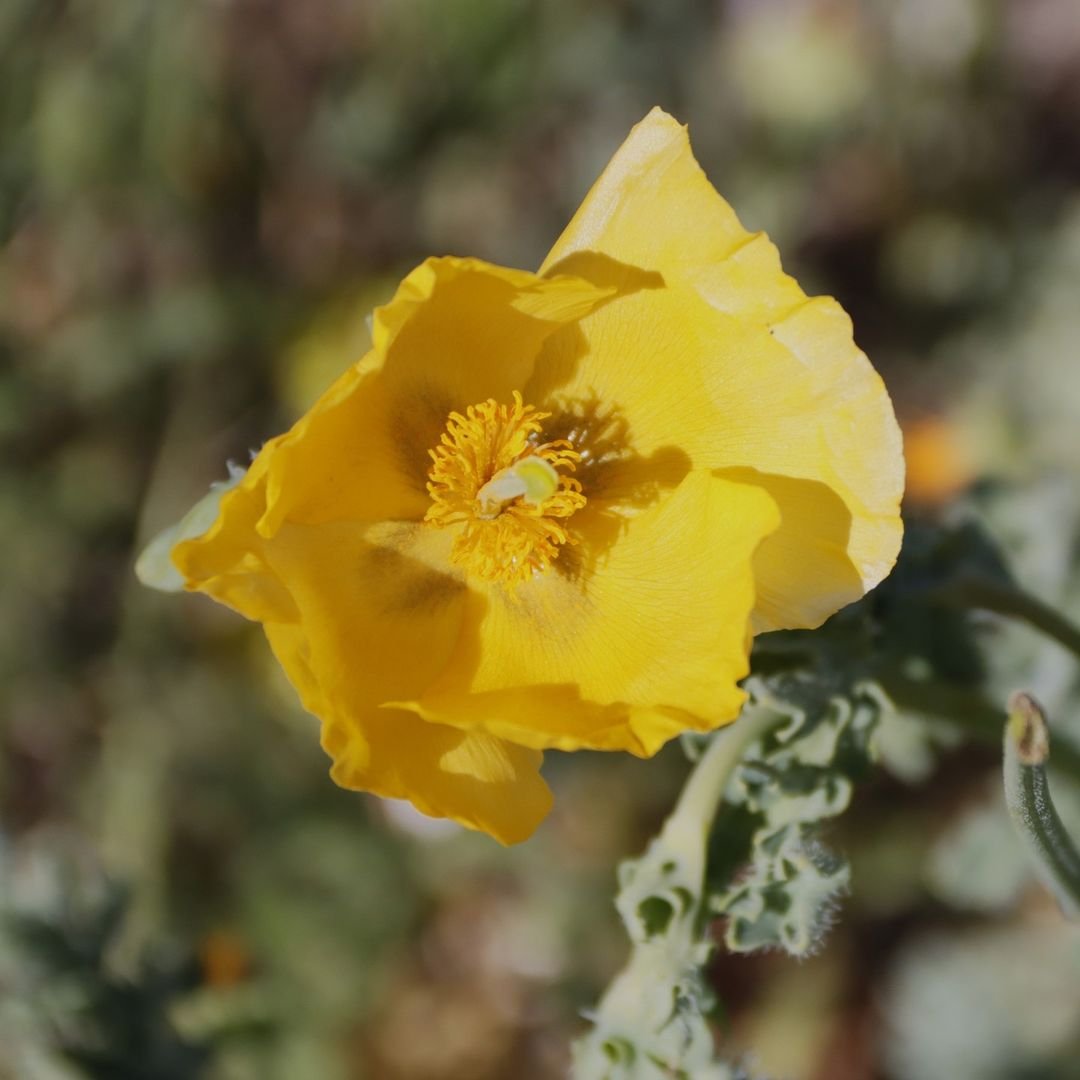
Here’s a chart with information about Horned Poppy:
| Category | Details |
|---|---|
| Botanical Name | Glaucium flavum |
| Common Name | Horned Poppy |
| Plant Zone | 5-9 |
| Sun Exposure | Full sun to partial shade |
| Soil Type | Well-drained, sandy or loamy soil |
| Watering | Moderate watering; prefers dry to moderately moist soil |
| Growth Habit | Upright, bushy perennial |
| Height/Spread | 12-24 inches tall; 12-18 inches wide |
| Special Features | Distinctive horn-like seed pods; bright yellow, poppy-like flowers; blooms from late spring to summer; attractive to bees and butterflies; can be used in borders, rock gardens, and as a ground cover; drought tolerant once established |
Horned Poppy is a coastal plant known for its unique seed pods and bright flowers. They are often used in coastal garden designs.
- Features: Bright yellow or orange flowers with horn-shaped seed pods.
- Growing Tips: Prefers full sun and well-drained, sandy soil.
Read more about horned poppy from the Missouri Botanical Garden.
From the vibrant hibiscus to the delicate harebell, flowers that start with H offer a wide range of colors, shapes, and fragrances. By incorporating these flowers into your garden, you can enjoy their beauty and attract pollinators like bees and butterflies. Next time you’re planning your garden, consider adding some of these H-flowers for a stunning display

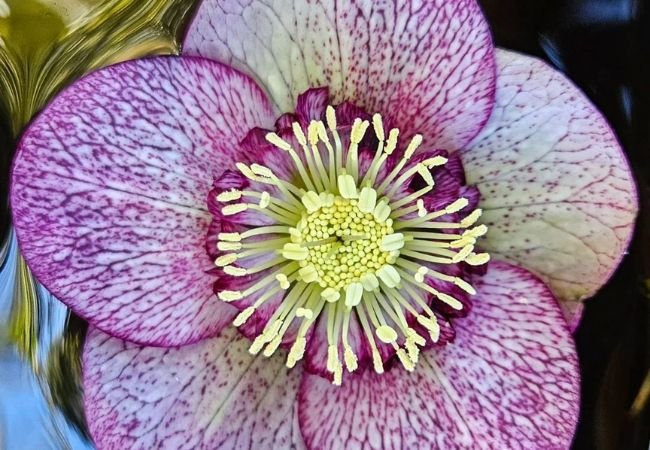





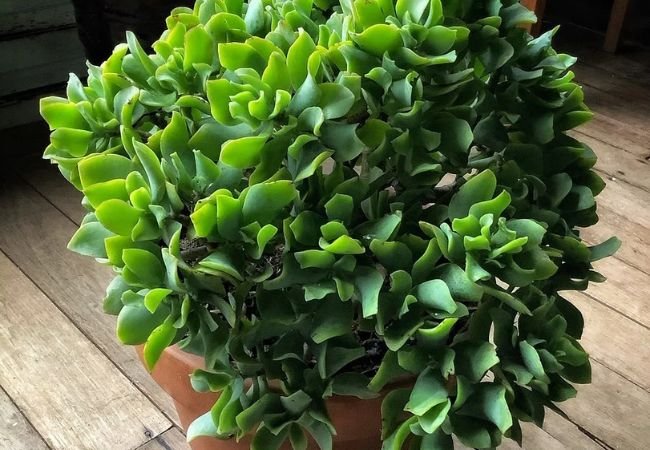
Leave a Reply